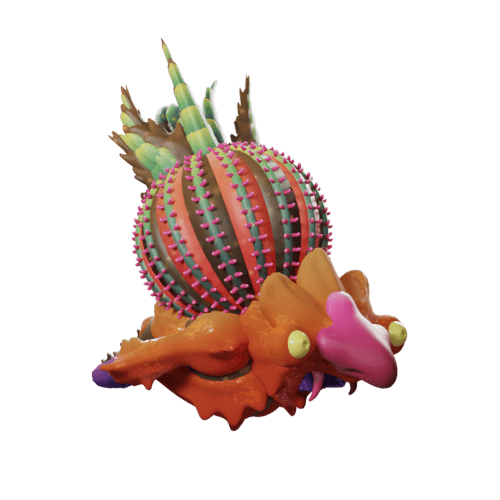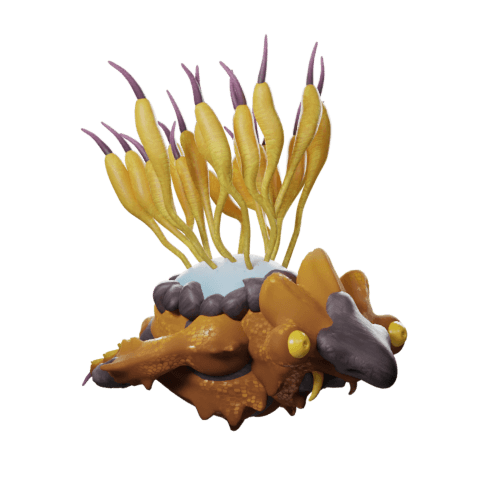Aloe Turtle
CID S-18
Subspecies Gallery

Soothing
Succulent Jungle CID SS-41
Odor
- Primary
- Ha
- Hint
- Bt
- De
- Sp
- Chirality
- Temperament
- Calm
This subspecies’ bright coloration alerts any would-be danger that they're poisonous. Well, more like mildy hallucinogenic. I’ve witnessed predators having a great time chasing after these turtles. I don’t think the predators have any intention of actually catching up to them.

Spiked Seaweed
Seaweed Fright CID SS-42
Odor
- Primary
- Im
- Hint
- Al
- De
- Te
- Chirality
- Temperament
- Neutral
Their dark blue and green coloration keeps them well camouflaged in the kelp forests of the Seaweed Fright. They seem to produce the least amount of the antitoxin, as the bulb on their backs shows the most signs of being affected by the mutation.

Ponded
Weedroot Plains CID SS-43
Odor
- Primary
- Ge
- Hint
- Ha
- De
- Lu
- Chirality
- Temperament
- Neutral
This subspecies of Aloe Turtle likes to spend its time near the surface of the water, letting the plants on its back stick out. They can be heard blowing air bubbles with their noses.
Species Data
Classification
- Average Size
- 200 x 185 x 154 cm
- Trophic Level
- Producer
- Habitat
- Marine
- Favorite Treat
- Marine Snow
- Nasal Cycle
- Right
Observations
Aloe Turtles are vital in combating the mutation wreaking havoc in the Diverging Forest. They use their fangs to dig deep into the sediment, consuming debris with their suckers. The turtles store the water consumed this way in the plants on their backs. Over time, this water develops into an anti-mutation antidote. They release this stored water to propel themselves to safety when they sense danger with their large noses. This species’ flight response makes them an unlikely frontline member in the war against the unknown mutation event.